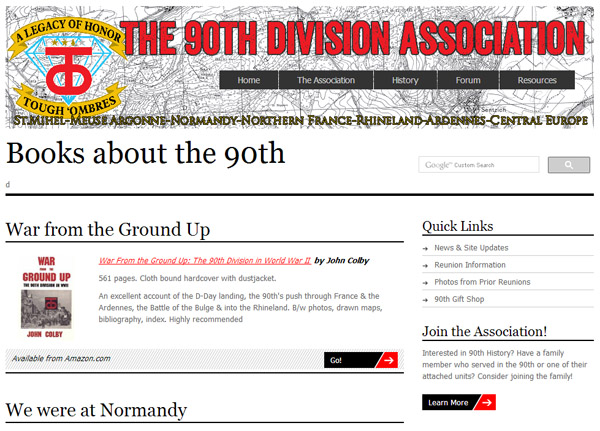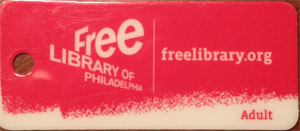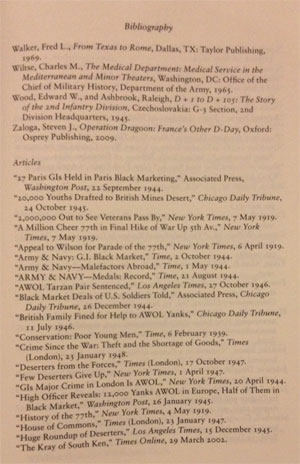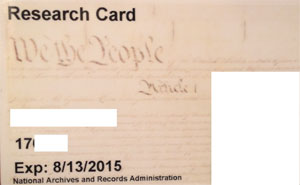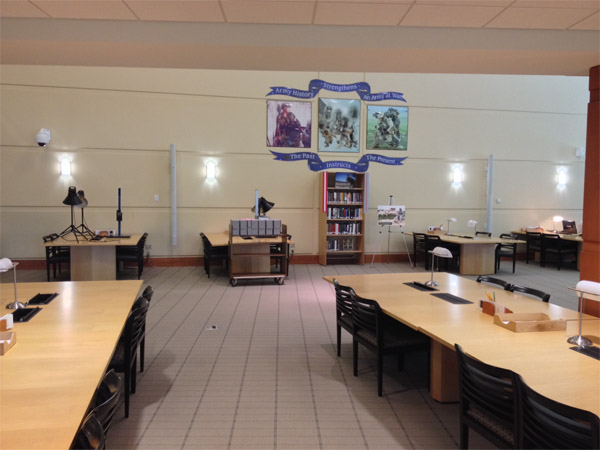WWII Research FAQ:
Simple Ways To Start Your Research and Why You Should be Doing Them Already
Date Written: 2/14/2015
Author: Tom Kelly - 90th IDPG & 100th ID
Introduction One of the most constant critiques for reenactors, especially ones new to the hobby, is that they are unwilling or incapable of doing any research on their own. Older reenactors who assert this typically make these statements under two assumptions. First, that newer reenactors are lazy because of the internet, Facebook, Xbox, and other distractions, which render them useless for anything other than spending their time posting memes. Second, that older reenactors are better, as a class, at doing research than their counterparts because they grew up in an age of books and an abundance of WWII veterans. While newer reenactors are more prone to ask “Does anyone have pictures of [unit]?” older reenactors are just as likely to promulgate some unsubstantiated theories they heard years ago and rest on their laurels, however dubious they are.
There is a glaring knowledge gap in the hobby between those who do research and share that information with others, and those who simply have nothing to share. It is unfortunate because now more than ever there is no real reason for this dichotomy to exist
The purpose of this article is to reject the idea that research is hard, expensive, or impossible for anyone without a degree in the study of History. On the contrary, researching World War II, especially the Armed Forces of the United States, is accessible, relatively easy, exceedingly cheap when viewed in the focused value it provides, and within the means of most young and old reenactors.
Identify the Sources You Will Need
Whether you call yourself a reenactor, living historian, or progressive, your focused research should begin with the official unit histories of the unit you reenact. Begin with the division and regiment you reenact. Sometimes you may be able to find a company history.Reach out to the Division Association of the unit you reenact. Ask them if they have a list of memoirs written by veterans of the unit, a division archive (see below for more on this), and if there is a division association directory (a good way to make contact with veterans of the unit you reenact).
Take a few minutes and make a plan. Identify what histories, memoirs, or other documents you will need and see where the search for those documents takes you.
Online Databases
After identifying the sources and looking at the Division Association of the unit of your focus, the most logical, and most accessible place to start your research is online. There are a number of great resources available online which offer databases of WWII documents that can be downloaded, saved, printed, and shared in pdf. format for free.
Here are just a few examples of free databases and websites every WWII reenactor should be familiar with.
Resource
Useful For
Official Army histories of specific campaigns.
Official Army History of operations in World War II.
Original wartime documents., for example the 1940 Marine Corps Manual, the entire five volume set of U.S. Marine Corps Operations in World War II, and links to wartime film footage.
Original wartime documents including official After Action Reports of Operation Neptune, the 3rd Marine Division’s AAR for the Bougainville campaign, and many more. Also, post-war Army studies, and the archives of the Military Review.
Maneuver Center of Excellence, Donovan Research Library WWII Student Paper Collection
Papers written by officers studying at Fort Benning after the war about WWII battles and campaigns (sometimes based on their own wartime experiences).
WWII Army Quartermaster Studies and Medical Service Histories.
A good way to locate books that may cover the subject matter you are searching.
A good way to locate books and publications that may cover the subject matter you are searching.
Once you locate a book you will need, WorldCat will show where copies can be found. Linking to the WorldCat page is a good way to assist your librarian in obtaining books on library loan.
A good way to locate original archival film of the unit you reenact. The HD still feature is incredibly helpful in figuring out exact what you are seeing in the film. Unfortunately the search engine for the site has problems and sometimes the captions are less than ideal. However still it is a good place to peruse.
A fully digitized and searchable database of the YANK Magazine archive from 1942-1945.
ProQuest Historical Newspapers(Must have access through a subscribing institution)
Proquest Historical Newspapers has fully digitized copies of historical issues of the New York Times, Washington Post, numerous other newspapers. The search engine is fantastic and one can generally easily find what they’re looking for.
AP Image Database(Must have access through a subscribing institution)
A searchable database of all AP photos through the years. Know that a certain photograph is of your unit? Great way to get a hold of a extremely high quality downloadable scan of one. Only problem is that it has to have been an AP photo.
Original WWII film and photographs.
Get a Library Card- Seriously
You may think that this is a joke, but a library card may end up being the best research tool you have.
Your local library typically gives you access to your state’s interlibrary loan. Library loan allows you to get a book or article you want from any participating library, delivered to you at your local library- for free.
Library loan programs can also be nationwide. If you are a college student you may have access to the Illiad Program which is essentially a nationwide library loan program. Local libraries may also have access to Illiad (for example, the Philadelphia Free Library participates in the program).
Your local library may also have access to the records and archives of local newspapers, or to other periodicals through Proquest (referenced in the above table).
Another useful resource is the Federal Depository Library program which establishes collections of government publications and documents in local libraries. Typically smaller regional libraries have copies of some documents on site, but the libraries of major universities have the largest collections. For more on the Federal Depository Library program and where to find participating libraries click here
Change the Way you Read
A good way to locate documents you want to research is to change the way you read the books and documents you have and locate resources that are hidden in plain sight.
When you see a footnote, go to the bibliography and find the citation the author has provided. This way you let the sources you already have do some of the research for you. Often those citations will give you enough information to find the document and the archive where it is held.This exercise also demonstrates why citing to your sources, and citing to them in sufficient detail, is critical. Citations serve two purposes: they provide a means for others to verify the accuracy of your writing, and identify sources for other researchers.
Selected pages from the bibliographies of
(Left) Glass, Charles. The Deserters: A Hidden History of World War II. 1st ed. New York: Penguin Press, 2013. 367.(Right) Atkinson, Rick. The Guns at Last Light: The War in Western Europe, 1944-1945. 1st ed. New York: Henry Holt and, 2013. 814.
This website shows examples of how to use the Chicago Manual of Style method of citation. If you find a source that does not fit neatly into one of the established templates do your best to provide all source-identifying information.
Quality research cites sources. Period.
Some sources, memoirs for example, rarely have citations. Unit histories published in the immediate post-war period also typically lack citations. However, if you are looking at a book published within the last 50 years that doesn’t have footnotes, citations, or a bibliography - you should be suspect of “facts” presented. For example, compare Alec Tulkoff’s Grunt Gear: USMC Combat Infantry Equipment of World War II, a book that is remarkable for the amount of original documents it cites, and Harlan Glenn’s Dungarees and Frogskin, which is unremarkable as a resource because it doesn’t cite to a single source (other than some pricing data and sizing tables from the 1943 U.S. Marine Corps Guide to Administration). Although Tulkoff’s book doesn’t include as many original photographs or contemporary illustrations of original items, it is more often cited than Glenn’s book because it is a substantive analysis rather than a photo collage of original items mixed with a handful of wartime photographs.
There is No Such Thing as Free ResearchWhile there are more free resources now than ever before, as you delve deeper into your research you are going to have to spend money. It is an unavoidable fact, but one which you should be familiar with already. Look at your bookshelf, you are probably staring at a few hundred dollars worth of books. How many of them focus on the unit you reenact? How many of those discuss the intricacies of that unit’s supply and command? The answer is not always “Go buy more books,” instead, look beyond tertiary source books to primary source materials, scholarly monographs or interviews to do focused research on your own.
Find a topic you want to research, examine the readily available sources and published materials and see what questions you have remain unanswered. It is unlikely that all of the free research sources identified above will ever get you all of the information you need.
Unfortunately, many of the sources listed in the table above do not have the time or resources to digitize all photographs, film, and documents in their collections.
If you want the information you will have to dig it up yourself or hire someone else to do that for you.
Although I am typically able to make it to NARA II once a year, I recently began working with a professional researcher to copy the G-4 (Logistics) records of the division I reenact. Hiring the researcher allowed me to save my vacation days and the researcher was able to copy the documents faster than I could have. For example, he charged $25/hr and could photograph roughly 100 pages/hr. Consider that for a moment, for roughly $100 I had over 400 pages of documentation straight from the records of the unit I reenact. Those types of documents give you detail that you can never find in unit histories or the best memoir. This type of spending on research is a good investment, and you will probably get more information from those types of documents than the $75 you could spend on a book about helmets , or some unnecessary piece of gear.
24 boxes of 100th ID materials at NARA II
I wholeheartedly recommend that reenactors who cannot physically visit an archive hire a researcher to copy items for them. At smaller archives often the library staff can pull and copy items for you, although this can be a more expensive. For example USAHEC charges $.50/page which is higher than most other archives,- but in most cases has been totally worth the value of the information uncovered
Get Off Your Couch and Into an Archive
Take the time to see what archives are around you. Anyone in the Mid-Atlantic region is fairly spoiled given their relative proximity to Washington D.C., but there are a multitude of archives and museums with WWII holdings throughout the country.
Most archives allow researchers to make copies of any material for free. However, there may be restrictions on how those copies can be made. For example, at the National Archives Records Administration II (NARA II) you can scan photographs using a flatbed scanner, but the U.S. Army Heritage and Education Center (USAHEC) in Carlisle, PA, forbids scanning of any kind.
Reading room at USAHEC
The solution is to build your tool kit. Get yourself a laptop computer (if you don’t have one already), a flatbed scanner (roughly $50-90), and/or a digital camera (roughly $100-150), and you will be more than prepared for any archive’s particular copying rules.Here are some examples of archives where you can begin your research:
The Library of Congress (Washington, D.C.)
The U.S. National Archives (Washington, D.C.)
The National Archives Records Administration II (College Park, MD)
U.S. Army Heritage and Education Center (USAHEC) (Carlisle, PA)
Fort Lee Quartermaster Museum (Fort Lee, VA)
Philadelphia Historical Society (Philadelphia, PA)
Regional National Archives Locations (to see all locations visit: http://www.archives.gov/locations/
It is a sad comment on our hobby that in my 10 years of reenacting in the PA,MD, and VA area I can count on one hand the a reenactors I know of who have been to NARA II. As you may know, NARA II holds the most extensive collection of WWII Signal Corps photographs and film, and the unit records of the Armed Forces in WWII.
Conclusion
As ridiculous as this may sound, this is an exciting time to research America’s WWII history. More and more documents are becoming available in digital format, and often for free. The lack of reenactors, living historians, and self appointed platitudes going to archives, writing and sharing in any academic way is the main cause for the knowledge gap in the hobby, but reenactors starting to undertake serious research projects holds the potential to be a revolutionary change in the hobby.
As a best practice, each unit should have established guidelines or reading lists which show where they have derived the source material for their impressions. If your unit does not have a reading list of useful books, or a thorough compendium of materials that substantiate their impressions, you can assume their impressions will be substandard and their knowledge lacking.
If you have questions take it upon yourself to answer them. Look beyond books published in the past 40 years to other sources that you can weigh and analyze. In the prior 2 years of our individual research, original documents and photographs have been found that have changed some of our fundamental assumptions Where there is an absence of knowledge and resource material, help others by accumulating a focused collection of photographs, documents, and books. The material is out there, the facilities are numerous, and the means to copy and digitize the what you find have never been cheaper.
To put it most bluntly, the hobby is best served by more research. We owe it to ourselves to take advantage of these resources to increase our knowledge and pass that information along to other reenactors and the public. If you aren’t already doing some of the things described in this article- start. If you are not willing to do that, then at least admit that your reluctance is due to your own lack of desire and initiative, not because doing research is hard or expensive. If you care about what you are doing, it is apparent when the time and effort has been invested. Spend more time researching and less time posting on Facebook “Help Pages” which focus on humor at the expense of real knowledge sharing, and rarely help anyone learn about the unit they portray. In sum, put up or shut up.
90th IDPG Original Research




